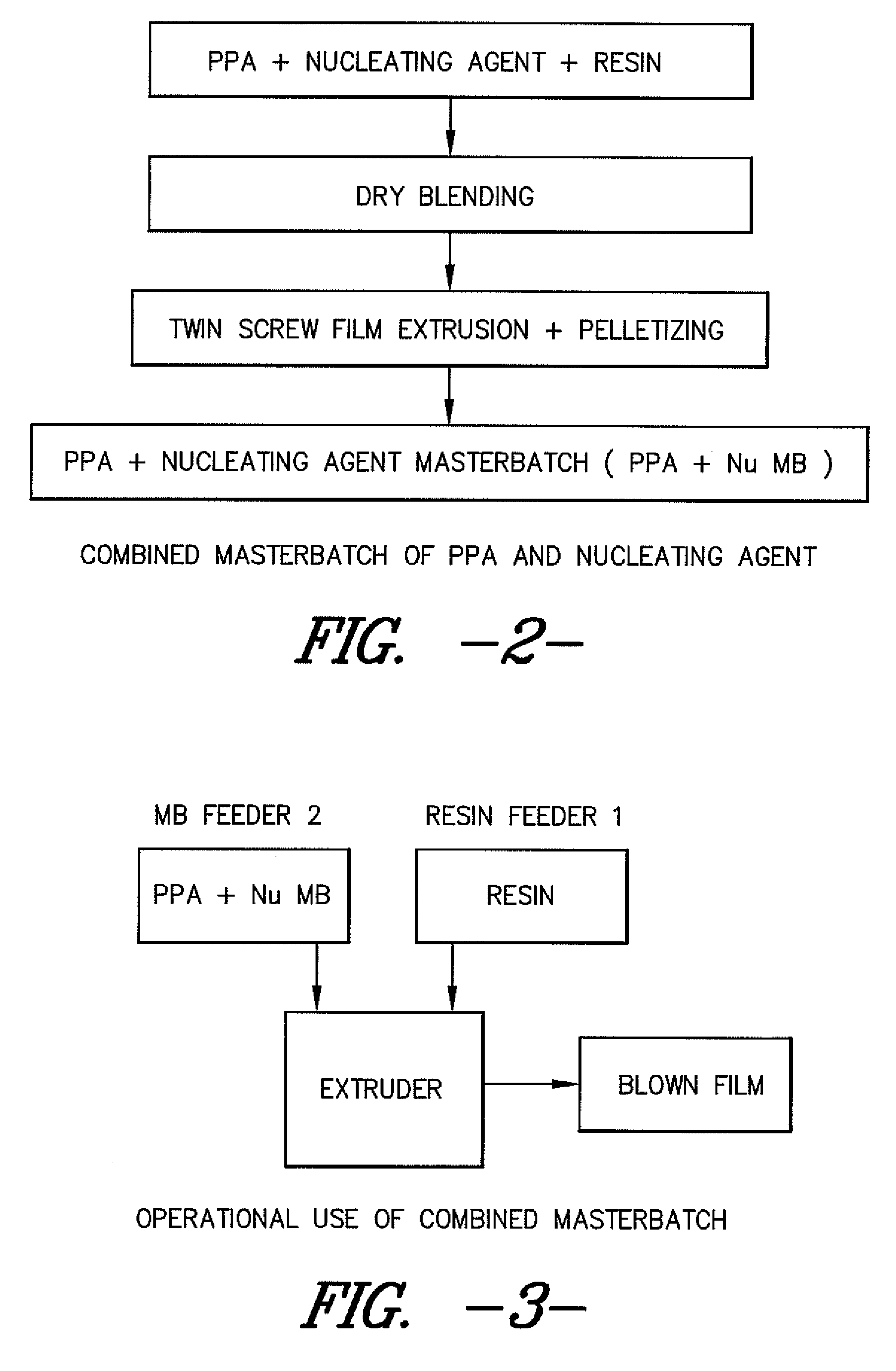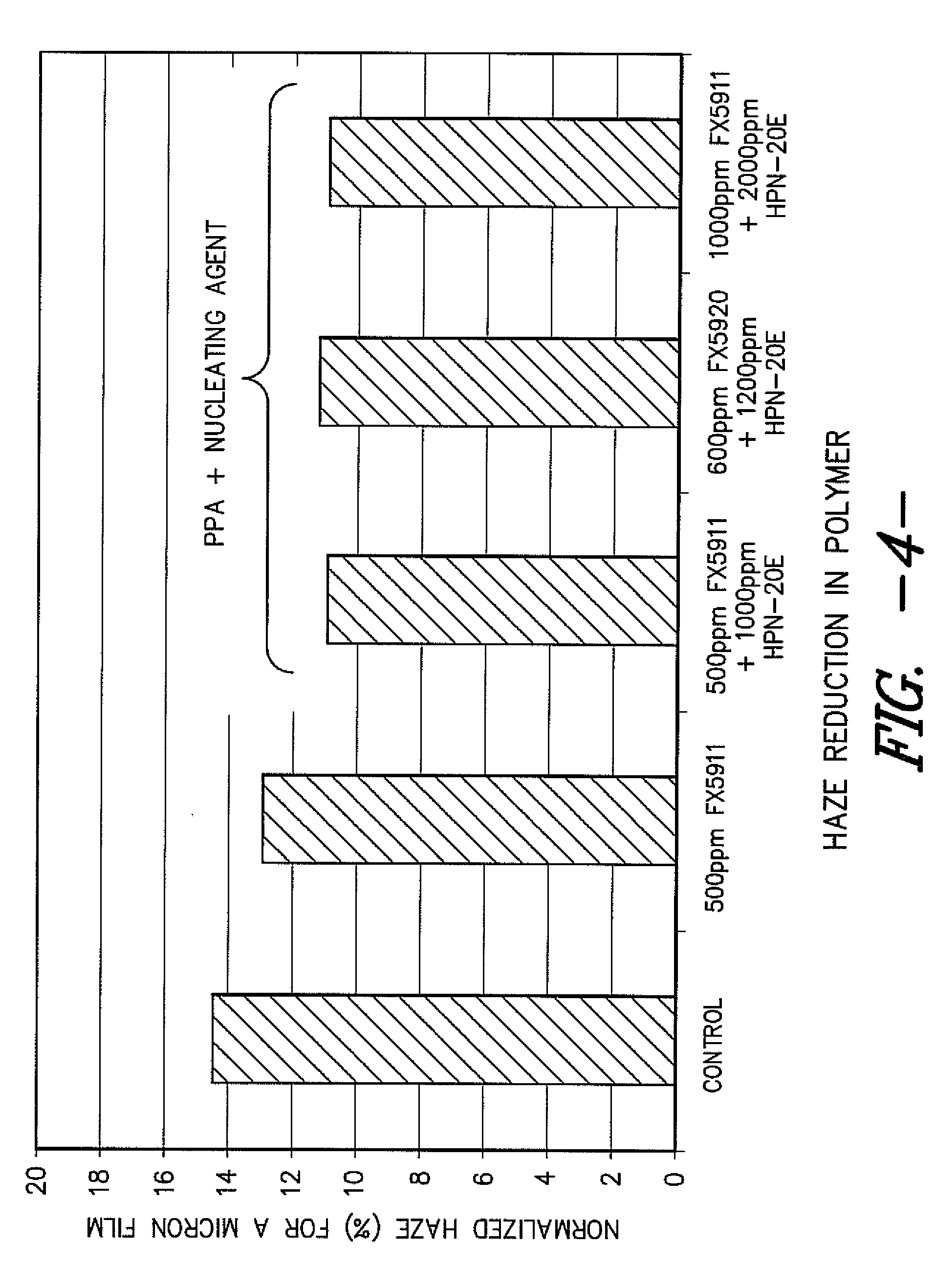Polymer additive compositions and methods
- Summary
- Abstract
- Description
- Claims
- Application Information
AI Technical Summary
Problems solved by technology
Method used
Image
Examples
example 1
PPA Fluoropolymer with HPN-20E Nucleating Agent
[0045]FIG. 5 shows haze values of films made using a single concentrate containing both a PPA (2% by weight for the PPA concentrate and 1% for the combined concentrate) and a nucleating or clarifying agent (2% by weight) added to a LLDPE polymer. The control sample showed relatively severe melt fracture under the processing conditions. When the PPA was added, a reduction in haze is observed and the melt fracture is reduced significantly. Also a significant reduction in die pressure was observed. In this example, the PPA compound used was fluorinated elastomer.
[0046]In this example, when using a combination of both a PPA and a nucleator (HPN20E in this instance) lower haze values are obtained than when using a masterbatch stream containing PPA with no clarifying agent. There is a significant advantage to using a PPA and a nucleating agent together.
[0047]Furthermore, the peak crystallization temperature increases when using a single maste...
example 2
Extrusion of a Film Using Combined Masterbatch
[0048]A blown film line (extruder: E20T and blown film unit type BL50T) from Dr. Collin, GMBH was used, as indicated below: The screw diameter was 20 mm. A suitable screw configuration for polyolefins was used with compression of 3.08. The extruder was equipped with a blown film die, diameter 30 mm and a die gap of 0.5 mm. The BUR was 2.5 and the thickness of the films was targeted at 30 micron. The extruder temperatures were as in Table 1 herein. A single masterbatch (concentrate) with PPA and also nucleating agent was employed.
TABLE 1Parameters for Extruder Zones in Degrees CentigradeZone 1Zone 2Zone 3Adapter[° C.][° C.][° C.][° C.]Die [° C.]160170190180180
[0049]The optical performance of the variant with the PPA and the HPN20E nucleator showed the best optical performance. It is believed that PPA reduces the macro size roughness and that HPN-20E reduces the micro-size roughness and the bulk haze of the LLDPE films. This results in a b...
PUM
| Property | Measurement | Unit |
|---|---|---|
| Percent by mass | aaaaa | aaaaa |
| Percent by mass | aaaaa | aaaaa |
| Percent by mass | aaaaa | aaaaa |
Abstract
Description
Claims
Application Information
 Login to View More
Login to View More - R&D
- Intellectual Property
- Life Sciences
- Materials
- Tech Scout
- Unparalleled Data Quality
- Higher Quality Content
- 60% Fewer Hallucinations
Browse by: Latest US Patents, China's latest patents, Technical Efficacy Thesaurus, Application Domain, Technology Topic, Popular Technical Reports.
© 2025 PatSnap. All rights reserved.Legal|Privacy policy|Modern Slavery Act Transparency Statement|Sitemap|About US| Contact US: help@patsnap.com



